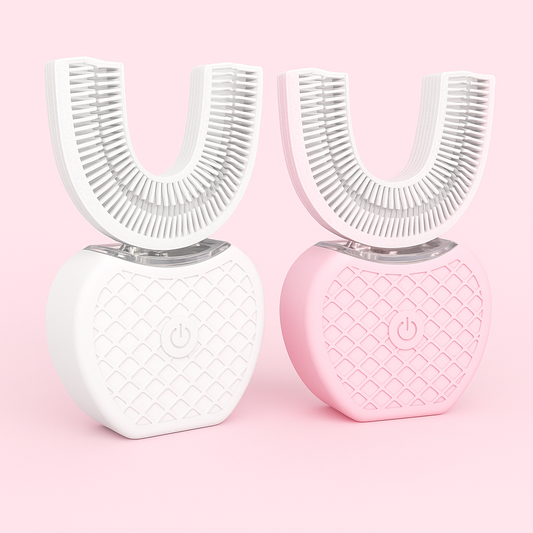Introduction — why this toothpaste trend matters
Consumers are increasingly searching for a good whitening toothpaste that avoids fluoride but still delivers visible results and supports enamel health. Fluoride-free niacinamide & xylitol toothpastes promise a balance: stain reduction, a healthier oral microbiome, and a gentler approach to daily care. This long-form guide explains how these formulations work, realistic timelines for whitening, enamel-strength implications, safety considerations, and how to choose the best toothpaste for whiter teeth without sacrificing protection.
TL;DR — quick summary
- Fluoride-free niacinamide & xylitol toothpaste primarily removes extrinsic surface stains and supports oral comfort.
- Xylitol reduces acid-producing bacteria; niacinamide may help mucosal and gum appearance.
- Expect noticeable surface brightening in 1–6 weeks; deeper intrinsic stains usually require professional treatment.
- If you are high caries risk, discuss fluoride alternatives (like hydroxyapatite or CPP-ACP) with your dentist.
- For curated fluoride-free options and targeted whitening products, many users explore selections labeled as toothpaste without fluoride or toothpaste with xylitol.
Understanding tooth discoloration: extrinsic vs intrinsic
- Extrinsic stains are on the tooth surface and caused by coffee, tea, tobacco, red wine, dark berries, and some medications. These stains respond well to polishing and mild abrasives found in many whitening toothpastes.
- Intrinsic stains come from inside the tooth (e.g., tetracycline staining, fluorosis, age-related changes). These typically require peroxide-based bleaching or professional procedures to change the tooth shade.
Key ingredients explained
-
Niacinamide (vitamin B3)
- Primary role in toothpaste: supports oral soft-tissue health and may reduce mild inflammation of the gums, which improves the visual contrast between teeth and gums.
- Niacinamide is not a whitening agent per se, but healthier gums can make a smile look brighter.
-
Xylitol
- A sugar alcohol that bacteria cannot ferment into acid. Xylitol helps lower levels of cariogenic bacteria (like Streptococcus mutans), reduces acid attacks on enamel, and promotes a more neutral oral pH.
- It indirectly protects enamel and reduces conditions that favor stain retention.
-
Mild abrasives and polishing systems
- These physically remove extrinsic stains. Look for low-to-moderate RDA (Relative Dentin Abrasivity) values to avoid excessive wear.
-
Calcium, phosphate, or hydroxyapatite
- Some fluoride-free toothpastes include remineralizing agents (nano-hydroxyapatite or CPP-ACP) that help repair surface roughness and support enamel integrity. These are the closest alternatives to fluoride for strengthening the surface.
-
Enzymes and plant extracts
- Some products add enzymes to break down biofilm or botanical extracts for scent and mild antimicrobial effects.
How fluoride-free niacinamide & xylitol toothpaste whitens teeth
- Primarily through gentle mechanical removal of extrinsic stains using mild abrasives and polishing agents.
- By reducing bacterial acid and stabilizing oral pH (xylitol), the toothpaste prevents additional micro-erosion that can trap stains.
- Healthier gums and reduced inflammation (niacinamide) create better visual contrast, making teeth look cleaner and brighter.
- Remineralizing additives like hydroxyapatite can smooth microscopic surface defects, reducing stain adherence and improving surface reflectivity.
Realistic timeline: what to expect week by week and month by month
-
Days 1–7
- Immediate improvements in mouthfeel, fresher breath, and reduction in plaque build-up for many users.
- Early removal of recent extrinsic stains — coffee or tea residue often diminishes.
-
Weeks 2–4
- Noticeable brightening as more adhered surface stains are polished away and staining buildup prevention begins.
- Gum appearance may improve if the formula reduces inflammation.
-
Weeks 6–12
- Surface whitening plateaus after most extrinsic stains are removed. Ongoing use maintains results.
- If the toothpaste contains hydroxyapatite or calcium/phosphate, gradual improvement in surface smoothness and light reflection may occur.
-
3+ months
- Long-term benefit is mainly maintenance: reduced stain re-accumulation, lower acid attacks, and a healthier oral environment.
Comparing fluoride and fluoride-free options for enamel strength
- Fluoride: Well-established in preventing cavities and remineralizing early enamel lesions. Considered the gold standard by dental associations worldwide.
- Hydroxyapatite and CPP-ACP: Evidence shows these can provide remineralization and reduce sensitivity in some users, and are effective alternatives for those avoiding fluoride.
- Niacinamide & xylitol: Support gum health and reduce bacterial acid production, indirectly protecting enamel but not a direct substitute for fluoride’s remineralization unless paired with mineral agents like hydroxyapatite.
How to choose the best toothpaste whitening product without fluoride
Look for formulations and product labels that clearly state the following:
- Active ingredients list including niacinamide and xylitol.
- Presence of remineralizing minerals (hydroxyapatite, calcium, or phosphate) if you want enamel support comparable to fluoride.
- Manufacturer transparency about RDA or abrasivity level to avoid excessive enamel wear.
- Clinical testing or third-party endorsements when available.
To explore options tagged as best toothpaste for whiter teeth, toothpaste that whitens teeth, or a trusted niacinamide toothpaste, visit curated collections that emphasize ingredient transparency.
Daily routine and techniques for maximum whitening and protection
- Brush twice daily for two minutes with a soft-bristled brush and a pea-sized amount of toothpaste.
- Use gentle circular motions rather than harsh back-and-forth scrubbing to minimize abrasion.
- Floss daily to remove interdental stains and plaque buildup that can shadow visible whitening effects.
- Rinse with water after consuming staining beverages and consider a mouthwash with xylitol or non-alcoholic antiseptic for breath control.
- Limit frequent snacking on acidic or pigmented foods; use a straw for dark drinks to reduce contact with the front teeth.
Maximizing whitening while staying safe
- Alternate with dentist-recommended fluoride treatments if you are at increased caries risk.
- Consider professional cleaning before starting a whitening regimen — removing calculus and heavy staining improves toothpaste efficacy.
- For faster or deeper whitening, consult your dentist about supervised peroxide treatments or in-office bleaching.
Safety considerations and potential side effects
- Niacinamide is generally well-tolerated; some sensitive users may notice mild irritation.
- Xylitol is safe for humans but toxic to dogs — keep all dental products out of reach of pets.
- Watch for increased sensitivity; if it occurs, reduce frequency and consult a dental professional.
- Children under a certain age should use lower-fluoride or age-appropriate dental products; consult your pediatric dentist before switching to fluoride-free options for young children.
When to see a dental professional
- If you have frequent cavities or a history of rapid enamel loss, don’t replace fluoride-based prescribed care without professional guidance.
- Seek advice if you notice gum recession, persistent sensitivity, or stains that don’t respond to home care — these may indicate underlying dental issues.
FAQs — quick answers to common questions
- Is toothpaste without fluoride effective? For stain removal and daily plaque control, yes; for remineralization of early cavities, fluoride remains the most proven option. Alternatives like hydroxyapatite can help but may not be identical.
- Does xylitol really help with cavities? Xylitol reduces acid production and can lower cariogenic bacteria levels, contributing to reduced cavity risk factors.
- How much whitening can I expect? Most users see moderate surface whitening within 2–8 weeks. For significant shade changes, professional bleaching is usually necessary.
- Are fluoride-free toothpastes safe long-term? Yes for many people—provided you’re not at high caries risk. Regular dental monitoring is recommended.
Choosing a product: checklist
- Contains niacinamide and xylitol for gum health and bacterial balance.
- Includes a remineralizing mineral (hydroxyapatite or calcium/phosphate) if avoiding fluoride.
- Moderate RDA and clear labeling of whitening claims.
- Positive user reviews and transparent ingredient sourcing.
Final thoughts and where to shop
Fluoride-free niacinamide & xylitol toothpastes offer a compelling option for people seeking a whitening toothpaste without fluoride that also supports gum health and reduces bacterial acid. They are especially attractive for those who prioritize natural-feeling formulations and milder daily care routines. Understand that the primary whitening effect targets surface stains — for deep or intrinsic discoloration, professional solutions are often necessary.
If you want to try carefully formulated fluoride-free products that focus on whitening, enamel support, and modern ingredient blends, consider browsing curated collections. For example, explore options described as fluoride toothpaste free, toothpaste whitening best, or a range of toothpaste for whitening teeth at Havana Body.
Sponsored recommendation — where to start
Ready to try a niacinamide & xylitol toothpaste that aims to whiten while caring for enamel and gums? Check Havana Body’s selection for options labeled as best toothpaste whitening teeth or a tailored toothpaste that whitens teeth. Their product pages highlight ingredient lists, usage instructions, and customer reviews to help you choose the right fit.
Want to take action now? Visit Havana Body to compare formulas, read ingredient breakdowns, and shop their curated range of good whitening toothpaste and fluoride-free options. Explore the collection and purchase the products that match your whitening goals and oral health needs at Havana Body.
Disclaimer
This article provides general information about fluoride-free toothpaste formulations and is not a substitute for professional dental advice. If you have specific dental concerns, cavities, or a history of enamel loss, consult your dentist before making changes to your daily oral-care routine.


